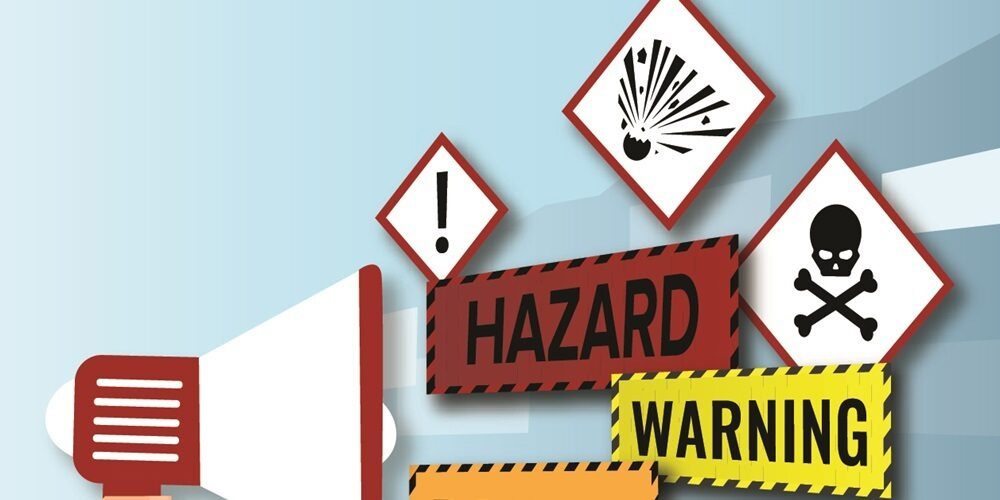How to Interpret Safety Data Sheets and Ensure Proper Chemical Handling

Hazard communication is a necessary safeguard when handling any hazardous substances, liquid, solid, or gases in any workplace. Any individual involved with using, handling, storing, transporting, or disposing of chemicals needs to possess proper, effective hazcom training.
Because all chemicals exhibit some form of biological or physiological effect, whether acute or chronic, it is essential to be aware of these effects to avoid exposure and consequently harm or damage.
The first step toward sufficient communication is being able to interpret and properly read Safety.
Data Sheets (SDS). The Hazard Communication Standard (at this link) requires information in SDS’s to be consistent, user friendly, and follow a 16-section format.
Part of why it is so important to understand and absorb the information conveyed in SDSs concerns how chemicals react to one another, how they react to their environments, and how they react over time.
Once an SDS has been analyzed, it is vital to establish and adhere to a set of chemical safety best practices.
Translating Safety Data Sheets (SDS’s)
Understanding and deciphering an SDS can be complicated. Every SDS is required to illustrate and relay 16 sections of critical information:
- Section 1: Identifies the chemical, its recommended use, and how to contact the supplier
- Section 2: Outlines hazards associated with the chemical. This includes the classification of the hazard, like if it is flammable. This section also includes symbols of the hazard, any precautionary statements and describes any associated hazards not classified
- Section 3: Details the ingredients in the product for the SDS, including substances and mixtures
- Section 4: Recommends first-aid measures by untrained responders to someone who has been exposed to the chemical
- Section 5: Advises on measures to be taken for a fire associated with the chemical
- Section 6: Addresses the response to spills, leaks, or releases, including containment and cleanup to prevent or minimize exposure to people, properties, or the environment
- Section 7: Describes proper handling and storage of the chemical
- Section 8: Outlines exposure limits, engineering controls, and personal protective measures to minimize exposure to workers
- Section 9: Identifies the physical and chemical properties associated with the substance or mixture, including its appearance, odor, pH, density, viscosity, flammability, solubility, and more
- Section 10: Details the reactivity and chemical stability of the substance while also listing any conditions that should be avoided, such as status discharge or vibrations. This section also lists classes of incompatible materials that might react to the chemical
- Section 11: Transmits information about toxicological and health effects associated with the chemical, including exposure routes like inhalation or eye contact. This section also describes the effects of short-term and long-term exposure and symptoms
- Section 12: Informs of the environmental impact of a potential release of the chemical
- Section 13: Outlines proper disposal practices, recycling, or reclamation
- Section 14: Indicates how to properly transport the chemical by road, rail, or sea
- Section 15: Goes into the safety, health, and environmental regulations associated with the chemical
- Section 16: Shares when the SDS was generated or last revised
Chemical Handling: Best Practices
Having the ability to acknowledge and institute the information and recommendations associated with an SDS is a fundamental stage in the safe handling of industrial chemicals and the prevention of exposure or disruptive dispersal to the environment.
Any chemical used onsite needs to be assigned proper storage that aligns with the recommendations outlined in the SDS. It is important when choosing how to store a chemical to consider its volatility to the surrounding environment as well as how it reacts to other substances. It is advisable to never store liquid and solid chemicals together. And a good practice is to store a chemical in a secondary container in case it leaks or spills.
When storing like chemicals, such as solids with solids or liquids with liquids, they must be compatible.
“If you have materials that contain reactive materials like peroxides, we want to make sure that they’re stored away from anything to which that peroxide can react with,” said Bruce Mackinnon, CD, the Regional Health and Safety Manager with AGF Access Group Inc.
It is also important to acknowledge all individuals requiring access to a chemical and take appropriate measures ensuring unrestricted, safe access, or retrieval. It is best to store any chemical no higher than the shoulder height of the shortest worker. This prevents accidentally spilling the chemical onto the face or in the eyes.
Along with adequate storage, it is necessary to understand what personal protective equipment (PPE) might be needed in handling or storing a chemical. This information can be found in section 8 of the SDS.
Proper Disposal of Chemicals
Recognition of proper handling of chemicals is just one aspect of chemical safety. Disposing of chemicals in a way that avoids harm or exposure to workers and the environment is equally relevant. More on this can be found in Section 13 of the SDS.
Any chemical ready for disposal should be kept separate from others to avoid any type of reaction. Furthermore, all chemicals should be labeled clearly and accurately.
“That is probably one of the first key safety measures when working with chemicals. Ensuring that all those materials that have been decanted from the original container, are properly labeled in their secondary containers,” Mackinnon said.”
Having a reputable disposal company that can be trusted and with knowledge of the local and
State laws are essential for establishing effective waste management programs on the job site.
Employers need to offer regular consistent training not just with handling and disposing of chemicals but also how to translate and employ the information contained in SDS’s. This can ensure a safe, accident-free workplace for both workers and the environment.
Until next time…Work Safe & Be Safe!




